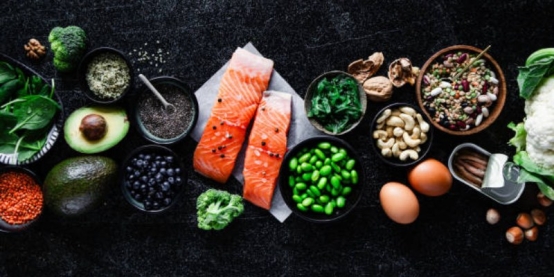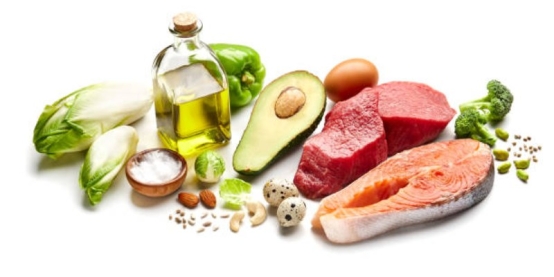The Ultimate Guide To The Ketogenic Diet For Beginners
Many diets promise fast results, but few have captured attention quite like the ketogenic diet. Known simply as “keto,” this eating style has surged in popularity for its benefits in weight loss, steadier energy, sharper focus, and even medical uses. Whether it’s people looking to shed fat, manage blood sugar, or improve mental clarity, keto has found a place in both lifestyle and medical conversations.
What is the Ketogenic Diet?
The ketogenic diet is built on a simple principle: reduce carbohydrate intake dramatically, keep protein moderate, and increase fat so the body switches fuel sources. Instead of relying on glucose from carbs, the body burns fat for energy by producing ketones.

Historically, keto began nearly a century ago as a medical therapy for epilepsy. Doctors discovered that starvation reduced seizures, and a high-fat, very low-carb diet could mimic that effect safely. Over time, keto evolved into a popular lifestyle diet, distinct from Atkins, Paleo, or Carnivore approaches. Unlike Atkins, which gradually reintroduces carbs, keto maintains a consistently low carb intake. Paleo emphasises whole ancestral foods, while Carnivore eliminates plants. Keto strikes a balance with specific macros.
The Science Behind Keto
What is Ketosis?
When carb intake drops below a threshold (typically under 50 grams per day), liver enzymes convert fat into molecules called ketones. Ketones can fuel the brain, muscles, and organs when glucose is scarce. This metabolic switch is called ketosis.
Ketones and Energy
Ketones provide a steady energy source, often described as more transparent and more consistent compared to carb-driven spikes and crashes.
Research-Backed Benefits
Supports weight loss by improving fat-burning efficiency.
Helps regulate blood sugar and may reduce insulin resistance.
Shows promise for neurological health, particularly in epilepsy and cognitive stability.
Some studies indicate improved triglyceride and cholesterol markers.
Limitations and Debate
Long-term data on keto is still growing, and some experts caution against very high saturated fat intake. Individual response varies widely, reinforcing the need for medical guidance in some instances.
Benefits of the Ketogenic Diet
Weight loss and fat burning: Keto reduces hunger hormones, making it easier to eat in a calorie deficit.
Blood sugar regulation: Consistently lower carb intake can stabilise insulin sensitivity.
Mental clarity: Many followers report clear thinking and reduced brain fog.
Cholesterol and heart health: Some experience improved HDL cholesterol and triglycerides.
Medical uses: Beyond epilepsy, research explores roles in PCOS, metabolic syndrome, and Type 2 diabetes.
Is Keto Right for You?
Keto benefits people struggling with obesity, insulin resistance, or high-carb cravings. Athletes needing quick energy bursts or endurance may find it limiting. Pregnant women, individuals with kidney disease, or anyone on diabetic medication should consult a doctor before starting. Signs keto may not be a fit include prolonged fatigue, poor athletic performance, or an inability to meet nutritional needs.
Macronutrient Breakdown & Food Rules
Macronutrient ratios for beginners:
Fat: 70–75%
Protein: 20–25%
Carbohydrates: 5–10%
These ratios differ from a standard diet where carbs dominate.
Foods to Include
Healthy fats: olive oil, avocado, fatty fish, coconut oil.
Proteins: eggs, poultry, beef, cheese.
Low-carb vegetables: leafy greens, broccoli, zucchini.

Foods to Avoid
Grains, starchy vegetables, processed foods, and added sugars.
Misconception: Keto is not a free pass to eat only bacon and butter. Whole foods and nutrient density matter greatly.
Types of Keto Diets
Standard Ketogenic Diet (SKD)
Most common approach: 70% fat, low carb, steady macros daily.
Targeted Keto Diet (TKD)
Consuming carbs before workouts is beneficial for athletes.
Cyclical Keto Diet (CKD)
Alternates strict keto with high-carb days, often for bodybuilders.
High-Protein Keto
70% fat with a boost in protein for satiety and muscle maintenance.
Getting Started: Step-by-Step Plan
Clear out high-carb foods from your pantry.
Stock up on keto staples: oils, lean proteins, almond flour, and leafy greens.
Use a free online macro calculator to set targets.
Plan meals to prevent temptation.
Start gradually lowering carbs to avoid the initial shock.
Sample Keto Meal Plan & Recipes
7-Day Outline
Breakfast: Scrambled eggs with spinach.
Lunch: Grilled chicken with salad and olive oil.
Dinner: Salmon with buttered broccoli.
Snacks: Nuts, cheese, boiled eggs.
Dessert: Keto chia pudding.
Quick ideas include avocado boats, keto smoothies, and salads with protein. Eating out? Choose bunless burgers, grilled meats, and low-carb sides.
Keto Flu & Side Effects
Switching to keto often brings temporary symptoms known as the keto flu: fatigue, fog, cravings, and dehydration. This results from electrolyte shifts. Remedies include staying hydrated, adding extra salt, supplementing magnesium, and tapering carbs. In the long term, monitor kidney function, cholesterol, and overall energy.
Supplements & Hacks for Success
Electrolytes: sodium, potassium, and magnesium are critical.
Medium-chain triglyceride (MCT) oils can provide fast ketone energy.
Exogenous ketones are optional, not required.
Fibre supplements help digestion since foods high in fibre are limited.
Multivitamins can cover micronutrient gaps.
Common Mistakes Beginners Make
Eating too much protein disrupts ketosis.
Fear of fat, leading to under-eating calories.
Forgetting to track carbs in sauces, drinks, or snacks.
Ignoring electrolyte balance.
Expecting instant weight loss—fat adaptation takes at least weeks.
Tracking Progress
Test ketosis using strips, breath analysers, or blood monitors. More importantly, track energy, waist changes, and blood sugar markers. Adjust macros if weight loss plateaus by tweaking calories or carb intake.
Keto Lifestyle & Sustainability
Social events, travel, or family meals can make keto tricky. Bringing keto-friendly snacks, researching menus, and flexible planning help long-term adherence. Many combine keto with intermittent fasting for more profound effects.

When Not to Do Keto
Those with kidney disease, eating disorders, pancreatic issues, or households with restrictive food availability should think carefully. Medical guidance is required for anyone taking insulin or glucose-lowering medications.
Resources & Tools for Beginners
Tracking apps such as Carb Manager or MyFitnessPal are useful.
Grocery stores now feature keto-friendly sections and brands.
Books and podcasts provide ongoing education and recipe inspiration. Trusted resources like the Cleveland Clinic, Harvard School of Public Health, and Mayo Clinic are reliable sources of information.
Building a Sustainable Keto Lifestyle
The ketogenic diet can provide unique benefits for weight loss, energy, and health management. For beginners, gradual implementation, balanced macros, and awareness of mistakes are crucial. With preparation and medical guidance where needed, keto can evolve into a sustainable eating pattern adjusted to personal goals and lifestyle.
Sources
Related Posts

Vegan Chocolate Avocado Mousse: Creamy Without Dairy

How to Make Zucchini Lasagna: A Delicious Low-Carb Alternative

Simple French Toast Recipes To Make Your Brunch Special

Moroccan Tagine Recipes For Beginners: Easy, Authentic, And Flavorful Dishes

5 Super Easy Muffin Pan Dessert Recipes
